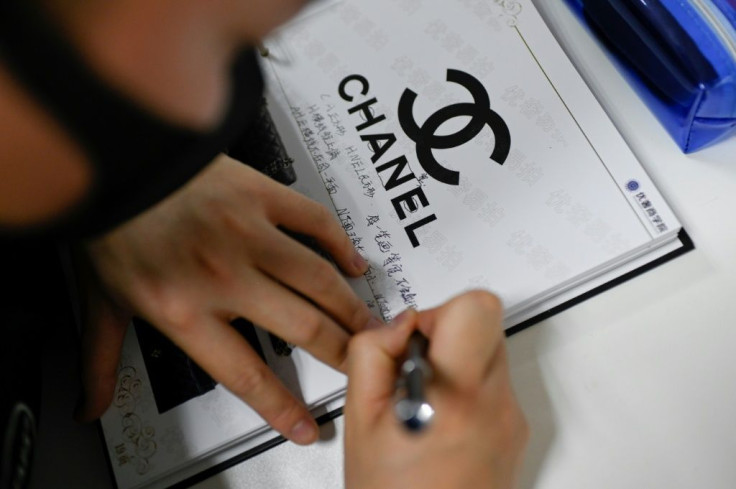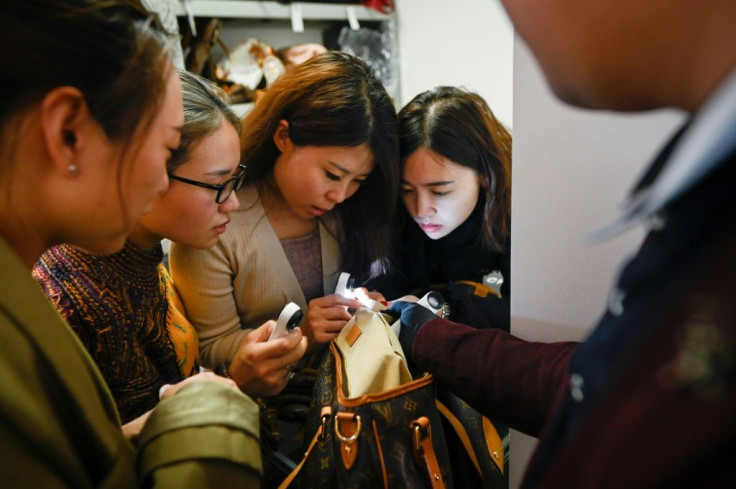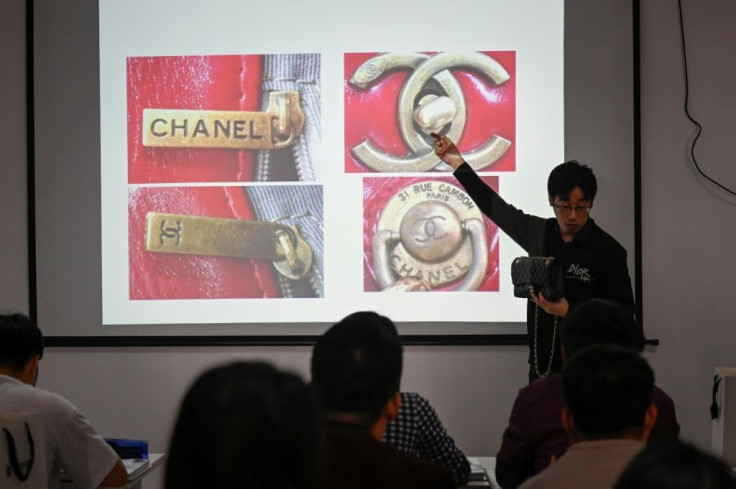Keeping It Real: Appraisers Sift China Second-hand Luxury Market For Fakes
It's the world's biggest market for luxury goods -- and their counterfeits -- so an expert eye for telling a bona fide Chanel handbag from a bogus one is a skill set in hot demand across China.
Enter the "luxury appraiser", an eagle-eyed diffrentiator of real from fake, trained to triage handbags, belts and garments for dodgy serial numbers, stitching and logos.
China's factories churn out huge quantities of luxury goods, much of which is destined for a domestic market worth about four trillion yuan ($620 billion), according to market researchers UIBE Luxury China.
Now the second-hand luxury market is also booming as those unwilling to part with thousands of dollars for a handbag seek out the prestige at a discount price.
But a vast shadow trade in counterfeits lies in wait for the bargain-hunters.
Many are fooled by "good imitations with little difference" from the originals, said Zhang Chen, founder of the Extraordinary Luxuries Business School, who tools his graduates with the gift of detecting fakes.

His seven-day course teaches students how to detect forgeries, value second-hand goods and learn the skills needed to appraise luxury products.
And while the fee is 15,800 yuan ($2,400), Zhang says it is a price worth paying as it provides a foothold in a second-hand luxury market that is only just taking off.
China's second-hand luxury market value reached 17.3 billion yuan in 2020, almost double the previous year, according to consultancy Forward Business Information.
"Chinese people buy one third of the world's luxury goods, but the circulation rate of three percent is far below the 25-30 percent in Western countries," he said, referring to the percentage that is later resold.

Zhan drills the rules of luxury into students who are hooked onto his every word.
"The lining of a black Chanel handbag must be pink," he says.
Trainees check ID cards on handbags from the French luxury fashion chain under a special ultra-violet light.
"Two letters will light up, and that's the secret," said Zhang, who learned his own skill appraising luxury goods a decade ago in Japan.
Knowing which letters in the Chanel logo use a rectangular rather than square font can "detect a third of the fakes on the market", he added.
His class are all affluent but from a variety of backgrounds, including the former editor of a fashion magazine from Shanghai and a bartender looking for a fresh start after his business was hit by the Covid-19 pandemic.

"I realised that second-hand luxury bags could be sold at a very good price," said 31-year-old stock market trader Xu Zhihao.
A Louis Vuitton Neverfull handbag bought two years ago can still be sold at 9,000 yuan on second-hand platforms, a 20 percent discount, while a small Chanel Gabrielle bag goes for about 60 to 70 percent of the counter price.
"I think the logic behind the sales is very similar to the financial products I'm selling now."
But the condition of the bags can have a heavy impact on value.
"Pay special attention to the scratches around the buckle, as a lot of people get manicures these days," Zhang warns, identifying grazes from long nails.
And seasonality is essential, with red -- the colour of good luck -- selling quickest over Chinese holidays.
His school has even attracted former counterfeiters as students, he added, many wanting to build on existing skills but shift to less disreputable work.
In most cases it takes Zhang around 10 seconds to tell if a product is real, he says, holding up a genuine Hermes bag.
Some clients send pictures of watches, trainers and clothes for an online diagnosis.
Verifying luxury products is set to become more high-tech with fashion houses introducing chips to trace pedigree.
Louis Vuitton announced in 2019 that it will launch a blockchain platform called AURA to record its goods.
Microchips have been inserted in the sole of women's shoes made by Italian brand Salvatore Ferragamo, while Burberry has experimented with Radio Frequency Identification technology (RFiD) in its goods -- a technology that uses radio waves to identify a tagged object.
But with the tech still in its infancy, Zhang is unconcerned about the threat to his analogue line of work.
"Any technology has the possibility of being cracked," Zhang told AFP.
"The market for identifying luxury products will always exist, it's just that the methods will have to adapt."
© Copyright AFP 2024. All rights reserved.





















